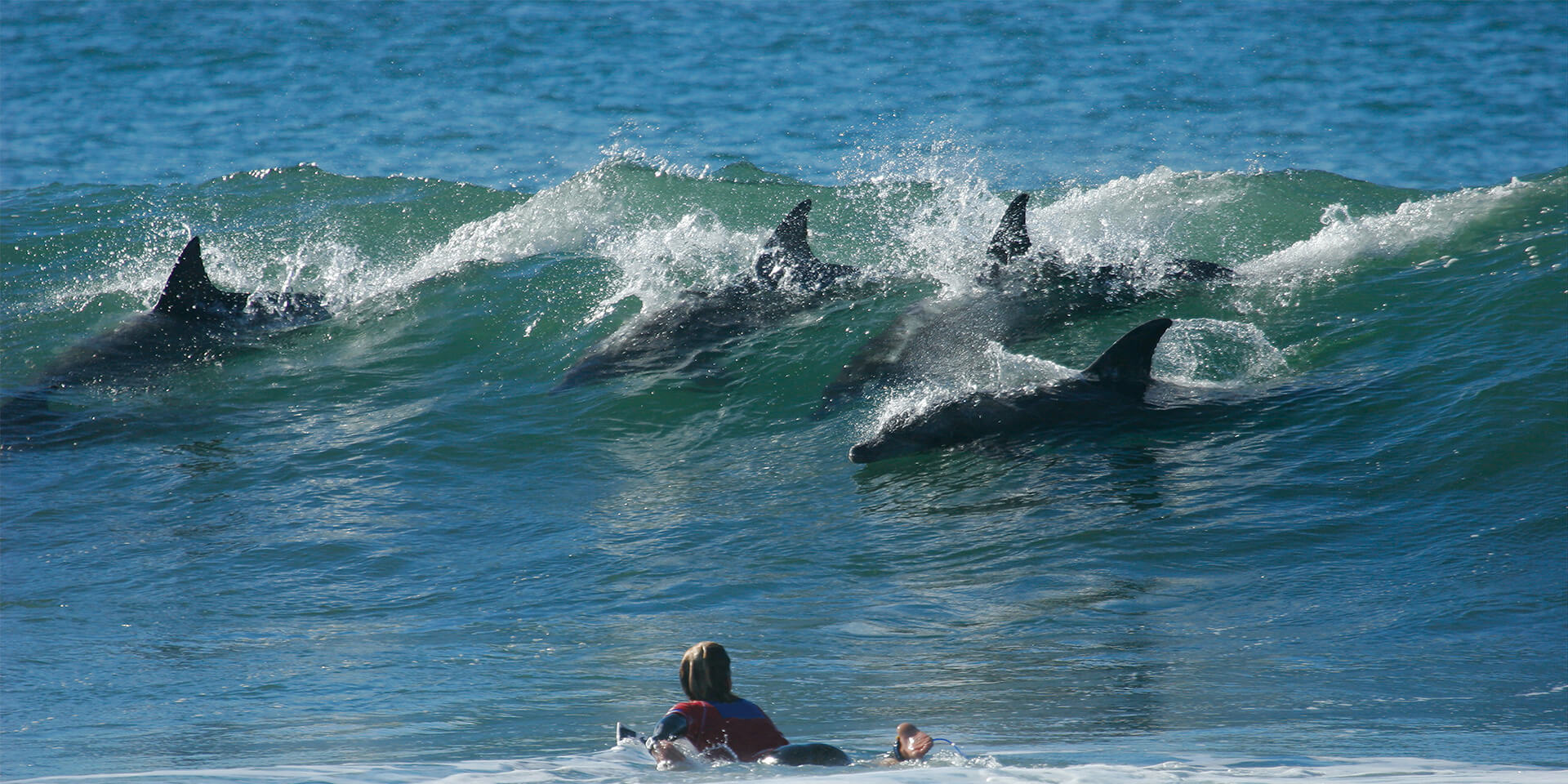Highlighting Recent Research Grants
With a relatively modest budget, our Grants and Research program has filled an important and unique niche in marine mammal research for many years, funding novel, low-cost, small-scale projects to help us carry out our responsibilities under Title II of the Marine Mammal Protection Act. In some cases, investments as small as $10-20,000 have served as seed money for new initiatives and concept projects, which often cannot find a funding source without data from a pilot project to demonstrate the concept. This page highlights a few projects we have supported in the recent past.
Whales From Space/VHR Satellite Project
The use of very high-resolution (VHR) optical satellite imagery is being explored as a way to monitor cetaceans and other marine life. This technology has the potential to provide valuable information on whale population abundance, distribution, and trends, which is of interest to government agencies, academic institutions, and commercial organizations around the world. The use of VHR satellite images to monitor cetaceans has increased in recent years and has aided in species recovery efforts through the assessment of these animals’ current status and the threats they face. The application of these satellites to protected species conservation is revolutionary.
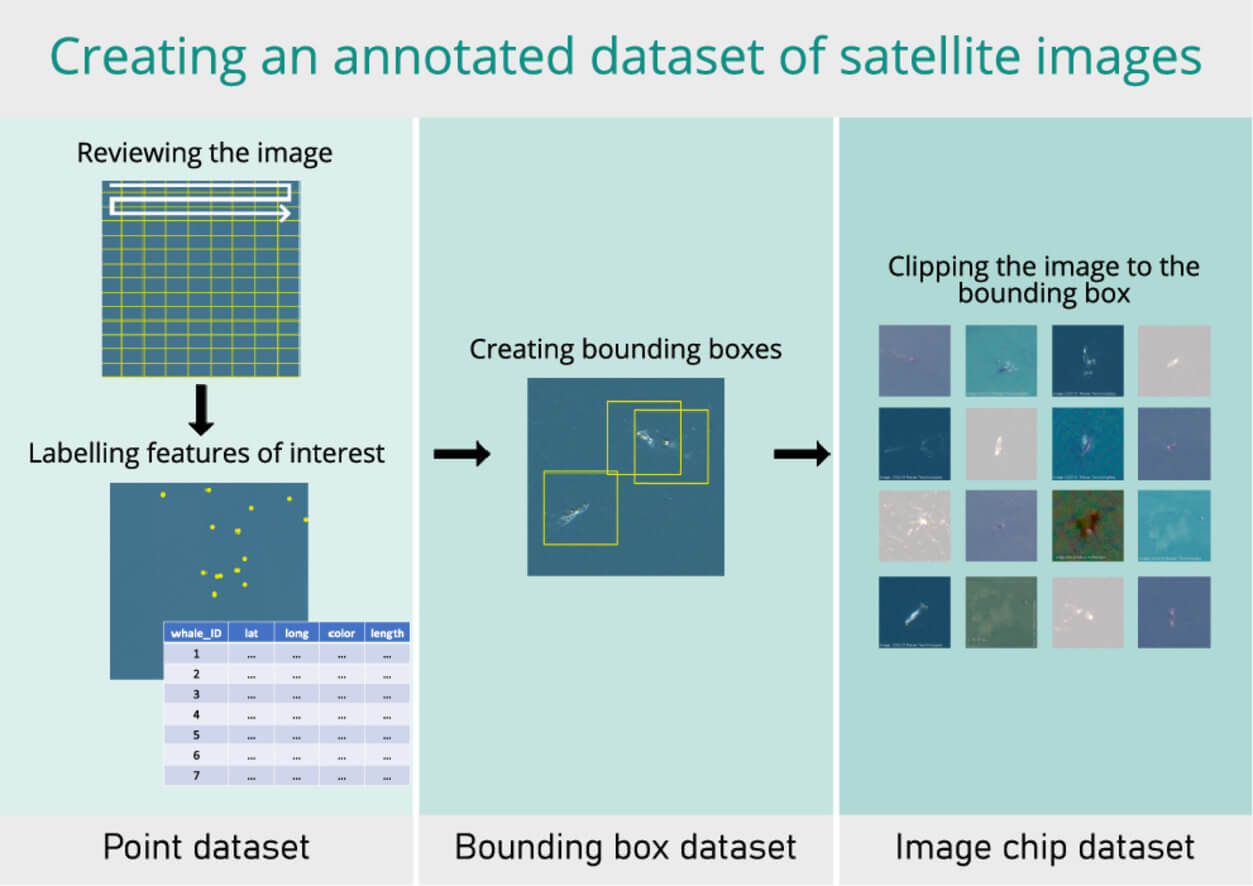
Computer models were utilized to effectively separate data (figure from Cubaynes et al. 2023) .
However, this raises the challenge of analyzing large amounts of imagery efficiently. To address this issue, AI machine-learning approaches are considered the most viable solution for wildlife monitoring. But in order to create a successful machine learning model, a large annotated dataset of photographic images of the target species is required. The aim of this study is to provide a detailed workflow for annotating VHR satellite images and creating datasets of annotations in a png format, alongside geospatial points, which will assist in collaboration across research groups toward the development of an operational system for marine animal detection in VHR satellite imagery.
What does this mean for conservation?
In addition to providing valuable information on whale populations and trends, VHR satellite imagery can also help to identify and monitor other critically endangered marine life, including sea turtles, seals, and sea lions. For example, scientists have used VHR imagery to identify and monitor leatherback sea turtle habitats in the Atlantic and Pacific oceans. Satellite imagery can also be used to detect and monitor the movements of marine mammals such as seals and sea lions, providing insights into their habitat preferences and current population dynamics. In the Arctic, VHR satellite imagery is used to detect and estimate the densities of beluga whales, narwhals, and walruses.
Another critical issue that VHR satellite imagery can be used for is to identify and monitor the presence of harmful algal blooms in coastal waters, which can have devastating impacts on marine ecosystems. These examples serve to show how the use of VHR satellite imagery has the potential to revolutionize our understanding of marine ecosystems and assist with the development of more effective conservation strategies.
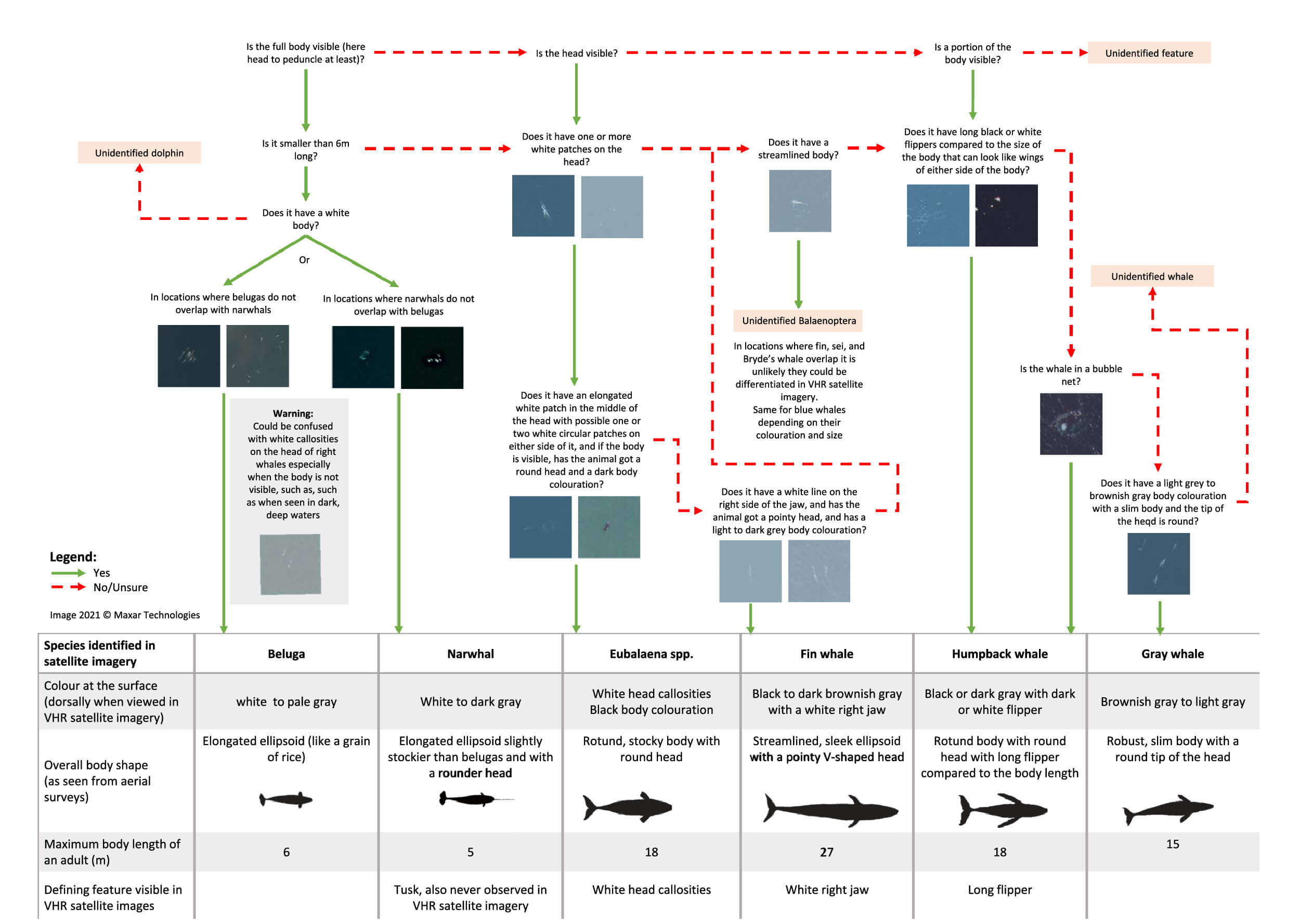
Because the satellites could not provide detailed images, classification of whales relied on identifying the presence of numerous distinctive whale features (figure from Cubaynes et al. 2023).
Low-Cost Solutions to Bycatch within Foreign Fisheries
Bycatch in fisheries remains the largest direct, human-caused threat to marine mammals, with gillnets posing the most substantial global risk. The development and implementation of effective bycatch mitigation measures face challenges related to economic costs and potential impacts on target species catch.
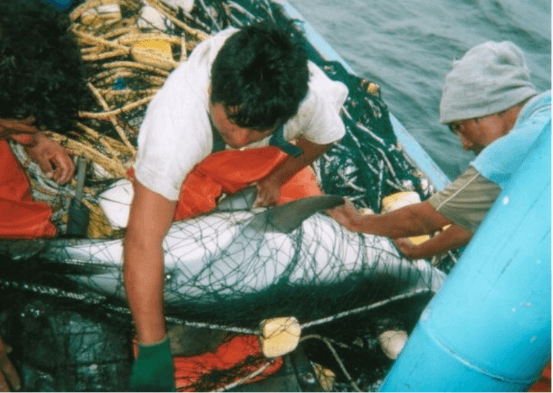
Crew members untangle dolphins from their fishing net as they are retrieved (Per Berggren, Newcastle University).
Off of Salaverry, Peru, approximately 80 surface-set drift gillnet vessels target various fish species. The estimated bycatch rate of dolphins and porpoises in this fishery is roughly 5 animals per trip. Previous trials with acoustic alarms (pingers) demonstrated a significant reduction in cetacean bycatch, but the devices were not implemented due to the cost of purchasing and maintenance. Similarly, in Torres and Passo de Torres, Brazil, bycatch of the Franciscana dolphin (Pontoporia blainvillei) occurs in a bottom set trammel gillnet fishery. To address this issue, researchers conducted trials of two low-cost mitigation methods: up-cycled glass bottle alarms and plastic bottle acoustic reflectors.
Glass bottle alarms, with a bolt suspended inside, were trialed between March 2019 and January 2020. The clinking sound produced did not alter cetacean bycatch and showed differing effects on target catch. However, plastic bottle acoustic reflectors (empty drink bottles filled with air) had mixed results on cetacean bycatch in Peru and Brazil. While plastic bottle acoustic reflectors did not have an effect in Peru, statistical analysis indicated a non-significant reduction in bycatch in the Brazilian fishery. Moreover, target fish catch significantly increased in nets with plastic bottles compared to control nets.

The upcycled soda bottles with metal bolts inside did not produce significant results. However, research has not fully concluded (Per Berggren, Newcastle University).
The trial in Brazil suggested that upcycled plastic bottle acoustic reflectors could be effective in reducing Pontoporia blainvillei bycatch in bottom set gillnets. The positive trend is likely due to backscatter from the bottles, aiding echolocating dolphins in detecting and avoiding nets. Results also indicated a potential increase in the catch of target bony fishes, possibly influenced by the reflective and light-attracting properties of the plastic bottles. The study highlights the varied impacts of glass bottle alarms and plastic bottle reflectors in different fisheries, emphasizing the need for continued research and development in bycatch mitigation at a cost-effective price for fishers.
Understanding Caspian Seal Bycatch
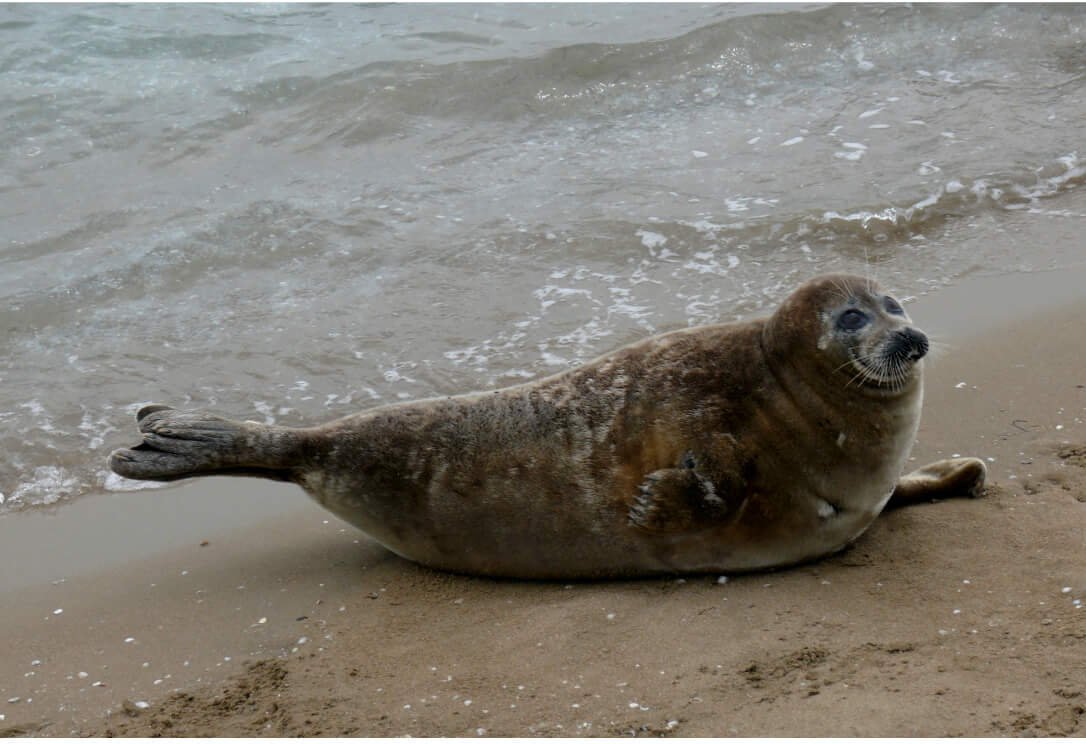
The Caspian seal is impacted by bycatch in the region.(Simon Goodman and Linas Svolkinas, University of Leeds).
The Caspian seal (Pusa caspica) is a species of seal found exclusively in the Caspian Sea, the world’s largest enclosed inland body of water. The species inhabits the coastal regions of Russia, Kazakhstan, Turkmenistan, Iran, and Azerbaijan. Caspian seals face significant threats, primarily habitat degradation, entanglements in nets intended for sturgeon, and contamination of the Caspian Sea. Population estimates indicate there has been a 90% reduction in the number of seals since the early 20th century. Conservation efforts are crucial to recovering this species because the Caspian seal plays a vital role in maintaining the ecological balance of the Caspian Sea, and its survival is emblematic of the overall health of both regional and global biodiversity. Bycatch of seals ensnared in fishing gear set in the northern part of the sea, as a result of illegal fishing activity originating from the Russian republic of Dagestan, threatens the seal population most heavily.
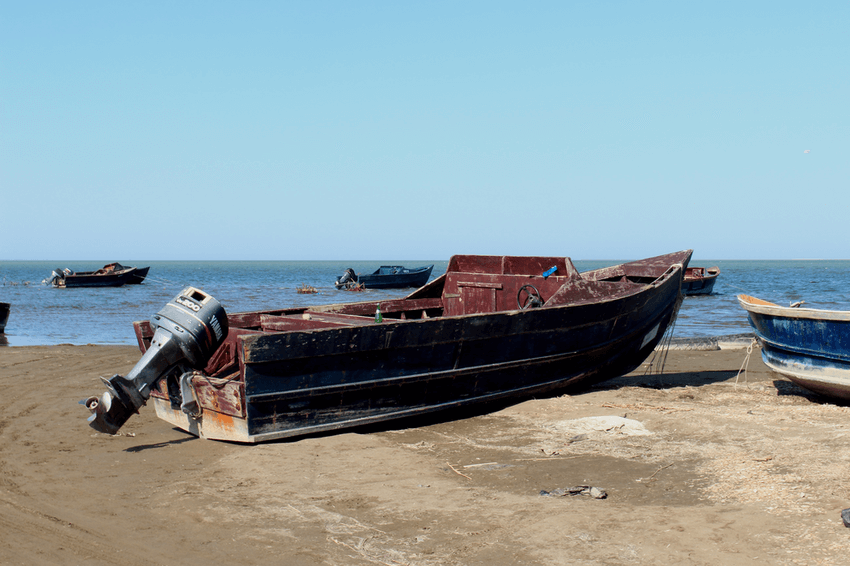
A Dagestani fishing boat, called a “Baidi” (Simon Goodman and Linas Svolkinas, University of Leeds).
The current situation for coastal communities in Dagestan is characterized by widespread financial insecurity, lack of economic opportunities, and overexploitation of legal fisheries, occurring since the collapse of the old Soviet Union. This has created conditions for a black market trade in highly valuable meat and caviar from Caspian sturgeon. Fishing for wild sturgeon, which causes most of the seal bycatch, is now illegal, as is seal-poaching, and trading in sturgeon and seal products. However, fur and oil from seals, along with meat and caviar from illegally caught sturgeon are traded alongside legally caught fish, creating the complex challenge of understanding the entire community rather than a small criminal group.
To develop solutions to conservation problems arising from illegal fishing, it is important to understand the viewpoints of fishing communities and other stakeholders, since law enforcement alone doesn’t address the reasons people choose to fish illegally. A joint team of researchers from the UK and Russia, supported by a grant from the Marine Mammal Commission, aimed to do just this. They interviewed 50 people from fishing communities, fish and seal product traders, and fisheries managers about their views on overfishing, the state of the Caspian Sea environment, conservation of seals, and what kind of fisheries regulations they thought there should be.
On the basis of the responses, participants were categorized into three groups: Nostalgists, Pessimists, and Optimists. Nostalgists felt that the health of the Caspian Sea had declined due to overfishing and other environmental problems, which the government had failed to address, and wanted to return to the older style of Soviet era planning and regulation. Optimists had a more positive view on the state of fisheries and their future, and thought that fishing communities should have more say in how fisheries were regulated. Finally, Pessimists thought marine biodiversity was in a poor state, but opposed too many regulations. They believed that restoring fisheries was important for everybody, but was too challenging to have a realistic chance of success.
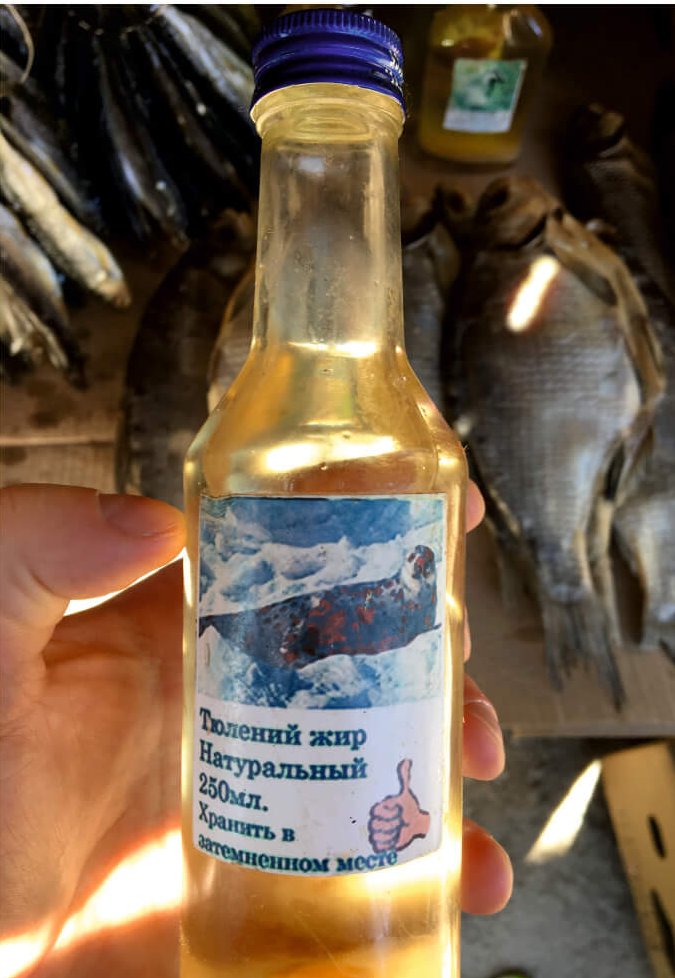
Caspian seal oil is sold as a commodity in the coastal Dagestani community (Simon Goodman and Linas Svolkinas, University of Leeds).
All groups acknowledged that overfishing is a significant threat to the Caspian ecosystem, and thought that seals should be conserved. All felt that improved regulation such as marine protected areas, and limits on fishing based on location or time exclusion could be effective tools for improving the status of fisheries, even if the Pessimists thought they couldn’t be implemented. Further all groups supported increasing scientific input into developing conservation measures. Scientific information and communication will be vital to the recovery of Caspian seals, considering many participants were unaware of how much bycatch was impacting the seal population. Lastly all of the groups wanted to see more economic opportunities for fishing communities to give them alternative ways of making a living other than fishing. Many people felt that fishing was a tough occupation that didn’t pay particularly well for most, and given a choice they would prefer to do something else.
While illegal fishing and bycatch remain significant problems, the study gives cause for optimism because overall, communities support more sustainable fisheries, and switching to alternative livelihoods. However, they need support to achieve this, such as access to small loans and advice on starting new businesses, and repairs to infrastructure such as roads and irrigation systems. The work emphasizes the importance of listening to community perspectives when trying to develop solutions to complex issues such as illegal fishing, since the communities are often unreceptive to outside intervention or top-down implementation. In the next steps, trusted community members could help play a role in advocating these ideas, with support from the Dagestani government, NGOs and other organizations.
For more information on Caspian seal conservation, visit caspianseal.org.
